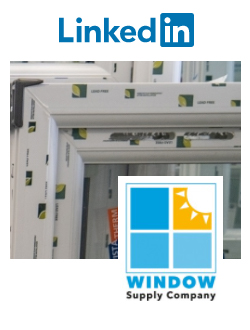15th Sept 2021
7 tips to keep up with high demand and manage customer expectations
Our sector is still experiencing record levels of demand since easing out of the first lockdown way back in June 2020.
With trade customers now advising of fitting schedules into the New Year, the trend of high demand looks set to continue well into 2022. With the usual seasonal demand, things may get a little busier. Below you will find 7 tips to help you keep up with high demand and manage customer expectations.
- Communication is key
Now more than ever it is crucial for installers to inform end-users about the current high demand and how it is impacting the sector. The huge rise in demand has caused global shortages of key materials such as PVC-u resin, glass and hardware which means that lead times and fitting timescales are now longer than before the pandemic. These shortages have also resulted in price increases and surcharges which are rising monthly. It is important to be transparent with customers regarding pricing. Excellent communication is key - it’s usually a lack of communication that leads to frustration so be upfront with your customers about any delays or price increases. - Build in contingency
Following on from the previous point, price increases are commonplace in the current climate and surcharges are rising monthly. Glass, resin, hardware, steel and timber price increases are common and quotes can’t be guaranteed for more than a few weeks. It would be a good idea to add in a small contingency for material costs on quotes so that you aren’t left shorthanded. - Be realistic with timescales
It is important to remember that most installers are in the same position with regards to lead times and shortage of materials irrelevant of the manufacturer as it’s a global shortage of raw materials. To win business, don’t over-promise customers with unrealistic time scales that are not achievable. Customers may not be aware of the impact on windows and doors and it’s up to you to explain the reasons behind extended fitting timescales. - Plan ahead
There is a lot of work for installers right now so plan fitting schedules accurately and factor in a little extra time for delays. Prioritise work and tackle the most important tasks first to ensure work doesn’t pile up creating a chaotic schedule. Get orders in sharp to your fabricator to allow them to plan appropriately to meet your delivery requirements. - Be selective with jobs
Following on from number 4, there is a lot of work for installers right now so you can afford to be selective with the jobs that you accept. Turn down the awkward, low-profit jobs, or the ones where you will struggle for materials and instead focus on those customers you want to work with. Jobs where you can deliver results, build your business profile and receive further work through referrals and word of mouth. - Work together
Throughout the course of the pandemic, we have always kept our customers up to date with issues as they occur within the sector. If you need to share some information with your customers regarding the issues our sector is facing, please e-mail us and we will be happy to help. - Remember to slow down
Remember nothing is more important than your mental health and well-being. Working long hours, taking on huge workloads and stress is detrimental to your health and well-being. Take time for yourself, your family and friends but most importantly slow down. Your health and well-being are far more important than any windows or doors.
As always, we need to work together, support each other and look after one another.
